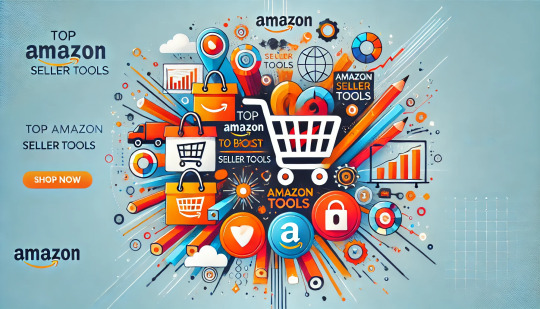Don't wanna be here? Send us removal request.
Text
The Importance of Enterprise Application Development for Business Growth

Enterprise application development is essential for businesses looking to streamline their processes and drive growth. With tailored solutions, companies can address specific operational challenges, creating systems that optimize workflow and enhance efficiency.
Custom ERP software development is a key part of this transformation. ERP systems allow businesses to manage resources, inventory, and financials more effectively. Enterprise application development helps create an integrated environment where every department can communicate and collaborate seamlessly.
By focusing on the unique needs of the business, ERP software development provides a scalable solution that grows with the organization. This ensures that as the business expands, its systems are capable of supporting new demands, leading to sustainable long-term growth.
0 notes
Text
Understanding ERP Software Development Costs: A Comprehensive Guide for Enterprises

Investing in an Enterprise Resource Planning (ERP) system is a significant decision for any business. However, one of the most critical aspects of this decision is understanding the costs involved in ERP software development. The cost of developing an ERP system can vary widely depending on several factors, including the complexity of the system, the technology stack used, and the level of customization required. In this comprehensive guide, we'll explore the key factors that influence ERP software development costs and provide insights into how enterprises can budget for their ERP projects effectively.
Factors Influencing ERP Software Development Costs
Scope and Complexity: The scope and complexity of the ERP system are two of the most significant factors that influence development costs. A basic ERP system with standard features will cost less than a highly customized system with advanced functionalities. Enterprises should carefully assess their needs and determine the essential features required for their ERP system to avoid unnecessary expenses.
Customization Requirements: Customization is often necessary to ensure that the ERP system aligns with the specific needs of the business. However, customization can also add to the development costs. The more customized features and integrations required, the higher the cost will be. It's essential to strike a balance between customization and cost to ensure that the ERP system is both functional and affordable.
Technology Stack: The choice of technology stack used for ERP software development also plays a crucial role in determining costs. Different technologies have different licensing fees, development costs, and maintenance requirements. Enterprises should consider the long-term implications of their technology choices, including scalability, security, and support, when budgeting for their ERP system.
Development Team: The cost of ERP software development is also influenced by the development team involved in the project. Hiring an in-house development team can be more expensive than outsourcing to a third-party provider, but it may offer more control over the development process. Conversely, outsourcing can be more cost-effective, but it's essential to choose a reliable and experienced provider to ensure the project's success.
Integration with Existing Systems: Integrating the ERP system with existing business systems, such as CRM, SCM, or HRM, can add to the development costs. Enterprises should consider the complexity of these integrations and the potential challenges they may present when budgeting for their ERP project.
Training and Support: The cost of training employees to use the new ERP system and providing ongoing support should also be factored into the overall development costs. A well-designed ERP system should be user-friendly, but some level of training will still be necessary to ensure that employees can use the system effectively.
Budgeting for ERP Software Development
To budget effectively for ERP software development, enterprises should start by conducting a thorough needs assessment. This involves identifying the key features and functionalities required for the ERP system and determining the level of customization needed. Once the scope of the project is defined, enterprises can begin to explore different technology options and development approaches to find a solution that meets their needs and fits within their budget.
It's also important to consider the total cost of ownership (TCO) of the ERP system, which includes not only the initial development costs but also ongoing maintenance, support, and upgrades. By taking a holistic approach to budgeting, enterprises can ensure that they have a clear understanding of the financial commitment involved in developing and maintaining their ERP system.
Conclusion
Understanding the costs involved in ERP software development is crucial for enterprises looking to invest in a new system. By carefully considering factors such as scope, customization, technology stack, development team, integration, and support, businesses can develop a realistic budget and ensure the success of their ERP project. With the right planning and preparation, enterprises can create an ERP system that delivers significant value while staying within budget
0 notes
Text
Unlocking Success with Amazon Seller Tools: A Comprehensive Guide

Success on Amazon requires more than just listing products and waiting for sales. To thrive in the highly competitive marketplace, sellers need to leverage powerful tools that streamline operations, optimize listings, and drive sales. Amazon seller tools are designed to help sellers achieve these goals by providing insights, automation, and strategies tailored to the Amazon ecosystem. This blog offers a comprehensive guide to Amazon seller tools and how they can unlock success for your eCommerce business.
1. Optimizing Product Listings
Product listings are the foundation of success on Amazon. Well-optimized listings not only attract more customers but also improve search rankings on Amazon’s platform. Amazon seller tools like Helium 10 and Jungle Scout offer features that help sellers optimize their product listings by analyzing keywords, monitoring competitor listings, and suggesting improvements. These tools provide data-driven insights that enable sellers to create compelling product titles, descriptions, and bullet points that resonate with potential buyers.
2. Managing Inventory Effectively
Inventory management is crucial for maintaining a healthy Amazon business. Overstocking can lead to increased storage fees, while understocking can result in missed sales opportunities. Amazon seller tools like RestockPro and InventoryLab help sellers manage their inventory efficiently by providing real-time data on stock levels, sales trends, and reorder alerts. These tools also offer forecasting features that predict future demand based on historical sales data, enabling sellers to make informed decisions about inventory replenishment.
3. Automating Pricing Strategies
Pricing is a critical factor in winning the Buy Box on Amazon. To stay competitive, sellers must continually adjust their prices based on market conditions, competitor pricing, and customer demand. Amazon seller tools like RepricerExpress and BQool automate the pricing process by dynamically adjusting prices according to predefined rules. These tools ensure that sellers remain competitive while maximizing profit margins. Additionally, some tools offer AI-powered algorithms that optimize pricing strategies based on real-time data and market trends.
4. Enhancing Customer Experience
Providing an exceptional customer experience is essential for building a successful Amazon business. Amazon seller tools like FeedbackWhiz and AMZFinder help sellers manage customer feedback, monitor reviews, and automate follow-up emails. These tools enable sellers to respond promptly to customer inquiries, resolve issues quickly, and encourage positive reviews. By enhancing the customer experience, sellers can build a loyal customer base and improve their seller ratings, which are critical for success on Amazon.
5. Conducting Product Research
Identifying profitable products is the first step to success on Amazon. Amazon seller tools like Jungle Scout and AMZScout provide comprehensive product research features that help sellers find high-demand, low-competition products. These tools analyze market trends, sales data, and competitor performance to identify lucrative opportunities. By using these insights, sellers can make informed decisions about which products to source, list, and promote on Amazon.
6. Monitoring Competitor Activity
Staying ahead of the competition requires constant monitoring of competitor activity. Amazon seller tools like Sellics and Viral Launch offer features that track competitor pricing, promotions, and listings. These tools provide valuable insights into competitor strategies, enabling sellers to adjust their tactics accordingly. By staying informed about competitor activity, sellers can maintain a competitive edge and respond quickly to market changes.
7. Managing Advertising Campaigns
Amazon’s advertising platform, Amazon Advertising (formerly Amazon Marketing Services), is a powerful tool for driving traffic and increasing sales. Amazon seller tools like PPC Entourage and Prestozon help sellers manage their advertising campaigns by optimizing bids, keywords, and ad placements. These tools provide analytics and reporting features that help sellers measure the performance of their campaigns and make data-driven decisions to improve ROI.
8. Ensuring Compliance and Protecting Your Brand
Compliance with Amazon’s policies and protecting your brand are essential for long-term success. Amazon seller tools like Seller Labs and Brand Registry Assist help sellers ensure compliance with Amazon’s rules and regulations. These tools also offer brand protection features that monitor for counterfeit products, unauthorized sellers, and intellectual property violations. By safeguarding their brand and ensuring compliance, sellers can avoid account suspensions and protect their reputation on Amazon.
Conclusion
Amazon seller tools are indispensable for achieving success in the highly competitive Amazon marketplace. From optimizing product listings and managing inventory to automating pricing and enhancing customer experience, these tools offer a wide range of features that help sellers streamline their operations and maximize their profits. By leveraging the right Amazon seller tools, sellers can unlock new opportunities, stay ahead of the competition, and achieve long-term success on the platform.
0 notes
Text
Understanding ERP Software Development Costs: What to Expect

When considering ERP software development costs, businesses must understand the various factors that influence the total investment. ERP systems are complex and tailored to the specific needs of an organization, making cost estimation a critical step in the development process.
The first factor to consider is the scope of the project. The more features and modules an ERP system requires, the higher the development costs. Businesses should carefully evaluate their needs and prioritize essential functionalities to manage costs effectively.
Customization is another significant cost driver. Off-the-shelf ERP solutions may require extensive customization to align with a company’s unique processes. Customization efforts, including coding, testing, and integration, can significantly increase the overall cost of the project.
Additionally, businesses should account for ongoing costs, such as maintenance, updates, and support. An ERP system is a long-term investment, and regular maintenance is essential to ensure its continued performance and relevance.
In summary, ERP software development costs are influenced by the project’s scope, customization needs, and ongoing maintenance. By understanding these factors, businesses can make informed decisions and budget effectively for their ERP implementation.
0 notes
Text
Understanding ERP Software Development Cost: Factors and Best Practices

Implementing an Enterprise Resource Planning (ERP) system is a significant investment for any business. The cost of ERP software development can vary widely depending on several factors, including the complexity of the system, the level of customization required, and the choice of deployment model. In this blog, we will explore the key factors that influence ERP software development costs and share best practices for managing these costs effectively.
1. Scope and Complexity of the ERP System
The scope and complexity of the ERP system are major factors that impact development costs. A comprehensive ERP system that includes multiple modules, such as finance, supply chain, human resources, and customer relationship management, will naturally cost more to develop than a simpler system with only a few modules. Additionally, if the ERP system requires extensive customization to meet the unique needs of your business, this will further increase development costs.
2. Customization and Integration
Customization is often necessary to ensure that the ERP system aligns with your business processes. However, extensive customization can significantly drive up the cost of development. Similarly, integrating the ERP system with existing software, such as CRM systems, e-commerce platforms, or legacy applications, can also add to the overall cost. When planning your ERP implementation, it's important to carefully consider which customizations and integrations are essential and which can be deferred or eliminated.
3. Choice of Deployment Model
The choice of deployment model—on-premise, cloud-based, or hybrid—also affects ERP software development costs. On-premise ERP systems typically involve higher upfront costs due to the need for hardware, software licenses, and IT infrastructure. In contrast, cloud-based ERP systems often have lower initial costs but may require ongoing subscription fees. A hybrid approach, which combines elements of both, may offer a balance between cost and flexibility. It's important to evaluate the long-term cost implications of each deployment model when making your decision.
4. Vendor Selection and Expertise
The choice of ERP software development vendor can have a significant impact on the cost and quality of the final system. Experienced vendors with a proven track record may charge higher fees, but they are more likely to deliver a high-quality product on time and within budget. When selecting a vendor, it's important to consider their expertise in your industry, their experience with similar projects, and their ability to provide ongoing support and maintenance.
5. Training and Change Management
Successful ERP implementation requires more than just software development—it also involves training your employees and managing the change within your organization. Training costs can vary depending on the complexity of the system and the level of customization. Additionally, change management efforts, such as communication, stakeholder engagement, and process redesign, can also contribute to the overall cost. Investing in comprehensive training and change management is essential for ensuring user adoption and maximizing the return on investment (ROI) of your ERP system.
6. Ongoing Maintenance and Support
ERP systems require ongoing maintenance and support to keep them running smoothly and to adapt to changing business needs. Maintenance costs can include software updates, bug fixes, performance optimization, and technical support. It's important to factor in these ongoing costs when budgeting for your ERP software development. Choosing a vendor that offers reliable support and a clear maintenance plan can help you manage these costs effectively.
Best Practices for Managing ERP Software Development Costs
Define Clear Requirements: Clearly define your business requirements and objectives before starting the ERP development process. This will help you avoid unnecessary customizations and keep costs under control.
Prioritize Essential Features: Focus on developing the most critical features and functionalities first. Additional features can be added in later phases if needed.
Choose the Right Deployment Model: Carefully evaluate the long-term cost implications of different deployment models and choose the one that best aligns with your business goals and budget.
Plan for Change Management: Invest in training and change management to ensure a smooth transition and high user adoption.
Negotiate with Vendors: When selecting a vendor, negotiate the terms of the contract, including pricing, payment schedules, and support services, to get the best value for your investment.
Conclusion Understanding the factors that influence ERP software development costs is essential for making informed decisions and managing your budget effectively. By carefully defining your requirements, prioritizing essential features, choosing the right deployment model, and planning for ongoing maintenance and support, you can ensure a successful ERP implementation that delivers long-term value to your business.
0 notes
Text
Understanding ERP Software Development Costs: A Strategic Investment for Enterprises

Enterprise Resource Planning (ERP) systems have become indispensable for businesses looking to integrate and streamline their operations. However, the development and implementation of an ERP system come with significant costs. Understanding these costs and the factors that influence them is crucial for businesses considering this strategic investment.
What is ERP Software Development?
ERP software development involves creating a centralized system that integrates various business functions, such as finance, human resources, supply chain management, and customer relationship management (CRM). The goal is to provide a unified platform that enhances efficiency, improves decision-making, and supports business growth.
Key Factors Influencing ERP Software Development Costs
Scope of the Project: The complexity and scale of the ERP system play a significant role in determining the development costs. A larger scope, involving multiple modules and extensive customization, will naturally lead to higher costs.
Customization Requirements: Customizing an ERP system to meet specific business needs requires additional time and resources. While off-the-shelf ERP solutions are available, they often require customization to align with the unique processes and workflows of a business.
Integration with Existing Systems: Integrating the ERP system with existing software and databases can add to the development costs. This integration ensures that all business functions are connected and that data flows seamlessly across the organization.
Technology Stack: The choice of technology stack, including programming languages, databases, and frameworks, can influence the cost of ERP software development. Advanced technologies may offer greater functionality but can also increase development expenses.
Vendor Selection: The choice of development vendor also impacts the cost. Experienced vendors with a proven track record may charge higher fees, but they also bring expertise that can reduce the risk of project delays and failures.
Ongoing Maintenance and Support: ERP systems require ongoing maintenance, updates, and support to ensure optimal performance. These ongoing costs should be factored into the total cost of ownership.
The Importance of ERP Software Development Costs in Strategic Planning
Understanding ERP software development costs is crucial for businesses looking to make a strategic investment. A well-designed ERP system can deliver significant benefits, but it's essential to ensure that the costs align with the expected return on investment (ROI).
Key Considerations for Managing ERP Software Development Costs
Conduct a Cost-Benefit Analysis: Before embarking on an ERP project, businesses should conduct a thorough cost-benefit analysis to assess the potential ROI. This analysis helps in understanding whether the investment will deliver the expected benefits.
Define Clear Requirements: Clearly defining the business requirements and objectives for the ERP system can help in avoiding scope creep and unexpected costs. A detailed project plan should outline the features, functionalities, and timelines.
Choose the Right Vendor: Selecting a vendor with the right expertise and experience is critical for managing costs. Businesses should evaluate vendors based on their track record, industry knowledge, and ability to deliver within budget.
Plan for Scalability: Investing in an ERP system that can scale with the business can save costs in the long run. Scalability ensures that the system can accommodate growth without requiring significant modifications or replacements.
Monitor and Control Costs: Regularly monitoring the project's progress and costs can help in identifying potential issues early on. Businesses should establish a budget and stick to it, with contingency plans in place for unexpected expenses.
Conclusion
ERP software development is a significant investment for any business, but it can deliver substantial returns in terms of efficiency, productivity, and growth. By understanding the factors that influence ERP development costs and planning strategically, businesses can ensure that their investment pays off. While the costs may be high, the benefits of a well-implemented ERP system can far outweigh the initial expenses, making it a crucial component of any enterprise's long-term success.
0 notes
Text
How Amazon Seller Tools Can Boost Your E-Commerce Success

In the highly competitive world of e-commerce, Amazon stands out as one of the most popular platforms for sellers. With millions of products available and fierce competition, sellers must leverage the right tools to succeed. Amazon Seller Tools offers a range of features designed to help sellers optimize their listings, track performance, and ultimately, increase sales. This blog explores how these tools can boost your e-commerce success.
The Importance of Amazon Seller Tools
Amazon Seller Tools are software solutions designed to help sellers manage their businesses on the Amazon marketplace more efficiently. These tools can assist with various tasks, such as product research, inventory management, pricing optimization, and customer service. By automating and streamlining these processes, sellers can save time, reduce errors, and focus on growing their business.
Key Features of Amazon Seller Tools
Product Research and Selection One of the most critical aspects of selling on Amazon is choosing the right products to sell. Amazon Seller Tools can help with product research by providing data on market trends, competition, and potential profitability. Tools like Jungle Scout and Helium 10 allow sellers to identify high-demand, low-competition products, helping them make informed decisions about what to stock.
Inventory Management Managing inventory is a complex task, especially for sellers with a large number of products. Amazon Seller Tools offer inventory management features that help sellers track stock levels, manage orders, and avoid stockouts or overstocking. Tools like SellerCloud and InventoryLab provide real-time inventory updates, automated reordering, and detailed analytics, ensuring that sellers always have the right products in stock.
Pricing Optimization Pricing is a crucial factor in e-commerce success. Amazon Seller Tools offers dynamic pricing features that help sellers stay competitive by automatically adjusting prices based on market conditions, competition, and demand. Tools like RepricerExpress and Aura allow sellers to set pricing rules and strategies, ensuring they remain competitive while maximizing profit margins.
Customer Service and Feedback Management Positive customer feedback is essential for maintaining a strong seller reputation on Amazon. Amazon Seller Tools can help sellers manage customer service and feedback by automating responses, tracking feedback, and addressing negative reviews promptly. Tools like FeedbackWhiz and SellerSmile provide features such as automated email campaigns, review monitoring, and customer support management, helping sellers maintain high levels of customer satisfaction.
Advertising and Marketing Amazon Seller Tools also offer features for advertising and marketing, enabling sellers to create and manage ad campaigns, track performance, and optimize their marketing strategies. Tools like Sellics and PPC Entourage provide comprehensive advertising management, helping sellers increase visibility and drive sales through targeted advertising on Amazon.
Benefits of Using Amazon Seller Tools
Increased Efficiency By automating time-consuming tasks, Amazon Seller Tools allow sellers to focus on more strategic aspects of their business. This increased efficiency can lead to better decision-making, faster growth, and a more streamlined operation.
Better Decision-Making Access to real-time data and analytics is crucial for making informed decisions. Amazon Seller Tools provide sellers with valuable insights into market trends, customer behavior, and performance metrics, enabling them to make data-driven decisions that can lead to increased sales and profitability.
Enhanced Competitiveness In the competitive Amazon marketplace, staying ahead of the competition is vital. Amazon Seller Tools help sellers optimize their listings, adjust pricing, and manage inventory effectively, giving them a competitive edge over other sellers.
Improved Customer Satisfaction By using Amazon Seller Tools to manage customer service and feedback, sellers can ensure that they provide a positive shopping experience for their customers. This leads to higher customer satisfaction, better reviews, and increased repeat business.
Scalability As sellers grow their businesses, managing multiple products, orders, and customers can become challenging. Amazon Seller Tools offer scalability, allowing sellers to manage larger inventories, more complex operations, and higher sales volumes without compromising efficiency or customer service.
Conclusion
Amazon Seller Tools are essential for any seller looking to succeed on the Amazon marketplace. By providing features that help with product research, inventory management, pricing optimization, customer service, and marketing, these tools can significantly boost a seller's e-commerce success. Whether you're a new seller just starting out or an experienced seller looking to scale your business, investing in the right Amazon Seller Tools can provide the competitive edge you need to thrive in the Amazon ecosystem.
0 notes
Text
Top Amazon Seller Tools to Boost Your Online Business Performance

In the competitive world of e-commerce, leveraging the right tools can make a significant difference in your business's performance. For Amazon sellers, using effective tools can enhance product visibility, optimize listings, and drive sales. Here are some of the top Amazon Seller Tools that can help boost your online business performance.
Essential Amazon Seller Tools
Helium 10: Helium 10 is a comprehensive suite of tools designed to assist Amazon sellers in various aspects of their business. It includes features for keyword research, product tracking, and listing optimization. The tool's advanced analytics and reporting capabilities help sellers make data-driven decisions to improve their sales performance.
Jungle Scout: Jungle Scout is renowned for its product research capabilities. It provides detailed insights into product demand, competition, and profitability, helping sellers identify lucrative opportunities and make informed decisions about which products to sell.
SellerApp: SellerApp offers a range of features to optimize Amazon listings, manage PPC campaigns, and track competitors. Its keyword research tools and performance analytics are particularly useful for improving product visibility and driving more sales.
Keepa: Keepa provides price tracking and product history data, allowing sellers to monitor price changes, track sales trends, and analyze product performance over time. This information can be invaluable for adjusting pricing strategies and identifying market trends.
AMZScout: AMZScout offers tools for product research, market analysis, and sales tracking. Its features help sellers identify profitable products, analyze market trends, and monitor sales performance, enabling them to make data-driven decisions and stay ahead of the competition.
Benefits of Using Amazon Seller Tools
Enhanced Product Research: Tools like Helium 10 and Jungle Scout provide valuable insights into product demand, competition, and profitability. This information helps sellers choose the right products to offer and avoid potential pitfalls.
Improved Listing Optimization: Amazon Seller Tools offer features for keyword research and listing optimization, ensuring that product listings are well-optimized for search visibility and conversion rates.
Efficient PPC Management: Tools like SellerApp help manage and optimize PPC campaigns, ensuring that ad spend is used effectively to drive traffic and sales.
Data-Driven Decision Making: By leveraging the analytics and reporting features of these tools, sellers can make informed decisions based on real-time data, leading to more effective strategies and better business outcomes.
Competitive Advantage: Using Amazon Seller Tools provides a competitive edge by offering insights and features that can help sellers stay ahead of their competitors, improve performance, and drive growth.
Conclusion
Investing in the right Amazon Seller Tools can significantly enhance your online business performance. By leveraging tools for product research, listing optimization, and PPC management, sellers can improve their product visibility, drive sales, and stay ahead in a competitive market. Consider integrating these tools into your Amazon selling strategy to maximize your success and achieve your business goals.
0 notes
Text
From Web to Wisdom: Seamlessly Integrate Web Scraping into Your Data Pipeline
In today's data-driven world, the ability to gather and analyze information is crucial for success. But what if the valuable data you need resides not in internal databases, but scattered across the vast expanse of the web? This is where web scraping comes in, acting as a powerful bridge between the web and your internal data pipelines.
Web Scraping: The Data Extraction Powerhouse
Web scraping automates the process of extracting specific data from websites. Imagine it as a skilled data collector, meticulously combing through web pages and pulling out the precise information you require. This data can range from product listings and pricing on e-commerce sites to news articles, social media sentiment, and real-time market trends.
Why Integrate Web Scraping into Your Data Pipeline?
Here's how web scraping can transform your data collection game and fuel your data pipelines:
Fresh Data, Always: Scrape data regularly to stay ahead of trends and make data-driven decisions.
Build Custom Datasets: Gather specific information you need, eliminating the need for manual data entry.
Automate Repetitive Tasks: Free up your team's time for analysis, not data collection.
Building a Robust Web Scraping Strategy
Here are some key steps to consider:
1. Identify Data Needs: Clearly define the specific data you require from the web. What questions do you hope to answer?
2. Target Websites: Identify the websites that hold the valuable information you seek.
3. Choose the Right Tools: Several web scraping tools are available, such as libraries like Scrapy (Python) or web scraping services offered by companies.
4. Develop a Scraping Script: This script will navigate the target websites and extract the desired data.
5. Data Cleaning and Integration: Clean the scraped data to ensure its validity and integrate it seamlessly into your existing data pipelines.
Leverage the Power of Web Scraping Services
For businesses that lack the in-house expertise or resources, partnering with a reputable web scraping company. Our team of experts possesses the technical know-how to navigate complex websites, handle dynamic content, and ensure ethical and compliant data collection. We can tailor a solution that meets your specific needs, freeing you to focus on maximizing the insights gleaned from your enriched data pipelines.
The Takeaway: Web Scraping as a Bridge to Success
By integrating web scraping into your data pipelines, you unlock a world of valuable information that can fuel smarter decision-making and propel your business forward. Whether you choose to build your own scraping solution or partner with a web scraping service, this powerful tool can become the bridge that connects you to the wisdom residing on the vast web.
#Custom data extraction#web data extraction#AI web scraping#Price Comparison services#Price monitoring services#web scraping services#web scraping#web scraping company
0 notes
Text
#custom software development#software development company#software development services#custom software development company
0 notes
Text
#erp software development company#erp software development services#erp software development#enterprise development software#enterprise application development#custom erp development
0 notes
Text
#crm consulting#custom crm development#crm development#crm software development#crm solution#crm development company
0 notes
Text
0 notes
Text
#web scraping services#web scraping#web scraping company#price intelligence#price monitoring#price tracking
0 notes
Text

Kanhasoft, a top leading IT staff augmentation company in India, UK, and USA. Enhance your team with exceptional tech talent through IT team staff augmentation services.
1 note
·
View note